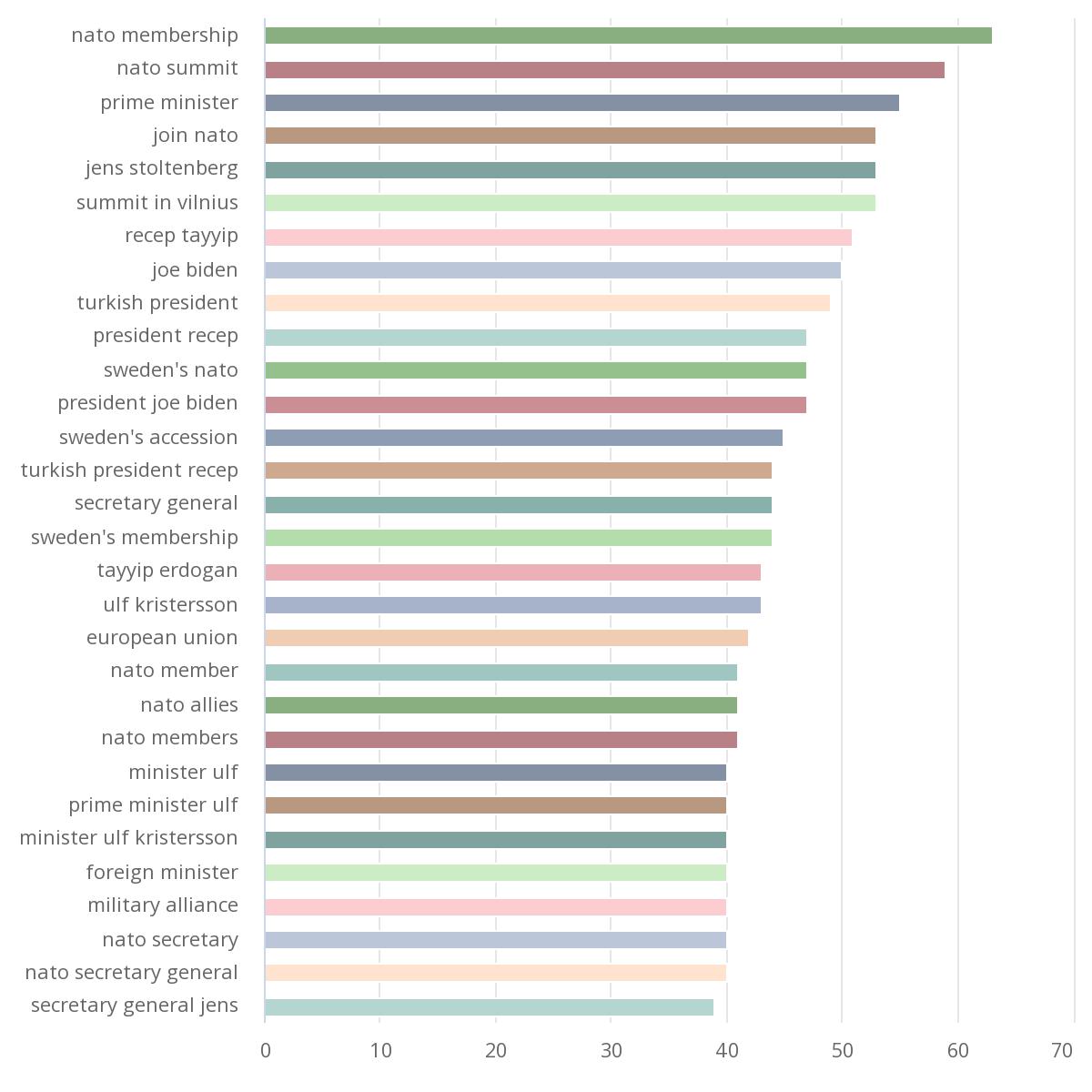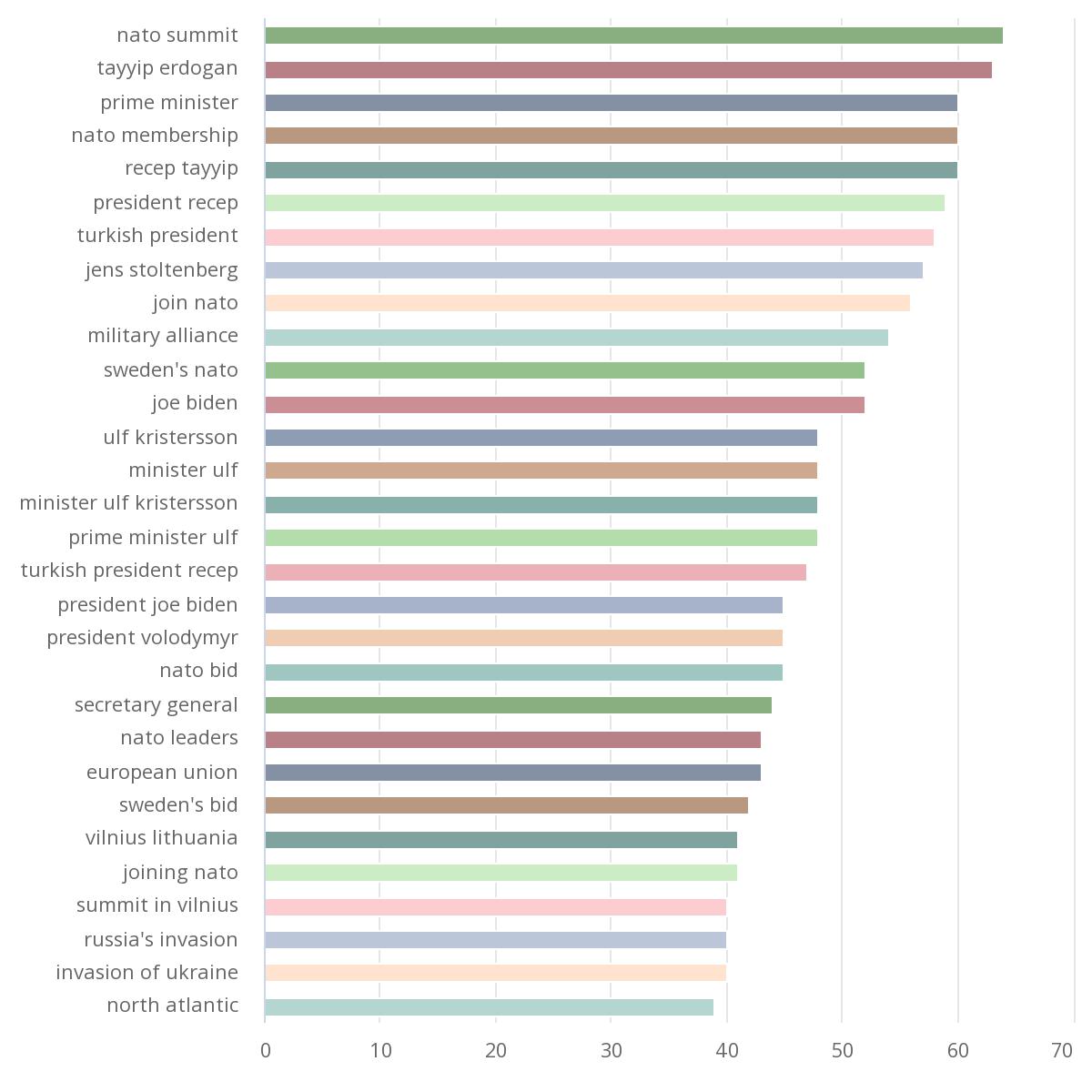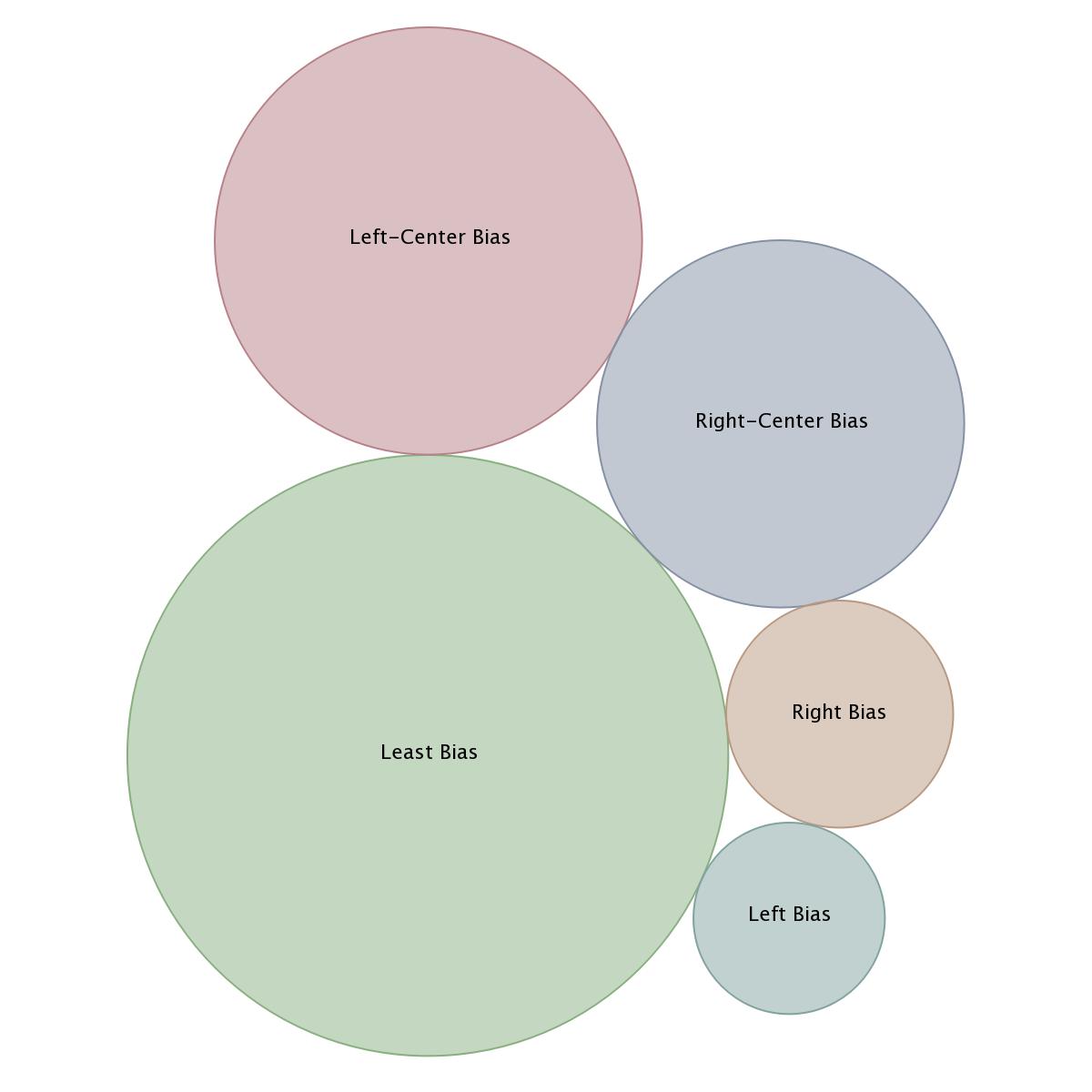
The media narrative surrounding Sweden's NATO bid has gained significant attention. Discussions have emerged regarding the possibility of Sweden joining NATO and Turkey's potential accession to the European Union. Our Narrative Intelligence has identified numerous sources amplifying these issues, with a total of 1,264 narrative items contributing to the narrative in U.S. Media over the last 14 days.
Our Kudzu Narrative Intelligence briefs auto-update every few hours with fresh analysis:
The upcoming NATO summit in Vilnius, Lithuania is a key focus of the narrative. The following points are highlighted:
The media narrative also focuses on Turkey's potential accession to the European Union and its impact on Sweden's NATO accession. The following points are emphasized:
The ongoing conflict in Ukraine plays a central role in the narrative. The following points are highlighted:
The potential accession of Sweden to NATO is a significant issue in the narrative. The following points are highlighted:
The United States' role in supporting NATO and Ukraine is another significant aspect of the narrative. The following points are emphasized:
In this Kudzu Narrative Intelligence Brief, the top surfaced keywords in U.S. media include "prime minister," "nato summit," and "joe biden." These keywords appear more frequently than others, with "prime minister" and "nato summit" having the highest count of 203. The keywords "joe biden" and "president joe biden" closely follow with counts of 199 and 198 respectively.
The prominence of these keywords in U.S. media suggests a focus on international relations and political leadership. The inclusion of "war in Ukraine" and "recep tayyip" keywords indicates the importance of ongoing conflicts and the involvement of key figures in these events. Additionally, the mention of "white house" and "u.s. president" reflects the interest in domestic politics and the influence of the U.S. on global affairs.
In U.S. media sources, certain keywords stand out, including "war in Ukraine," "white house," and "vladimir putin." These keywords appear frequently, with "war in Ukraine" having the highest count of 178. The inclusion of "king charles" and "russian president" further highlights the focus on international conflicts and political figures.
The prominence of these keywords in U.S. media suggests a specific narrative and interest in the ongoing war in Ukraine, the actions of the Russian president, and the involvement of the U.S. government. The mention of "sweden's nato membership" and "membership in nato" indicates a focus on alliances and international security.
European media sources have their own set of keywords, including "nato member," "nato allies," and "nato members." These keywords appear exclusively in European media, with a count of 41 each. The inclusion of "foreign minister" and "nato secretary general" further emphasizes the focus on international relations and diplomatic efforts.
The prominence of these keywords in European media suggests a specific narrative centered around NATO and its member countries. The mention of "secretary general jens" highlights the importance of leadership within the organization and the role of key figures in shaping its direction.
Keywords unique to Pacific region media include "president volodymyr," "nato bid," and "nato leaders." These keywords appear more frequently in this media category, with "president volodymyr" having the highest count of 45. The inclusion of "sweden's bid" and "russia's invasion" further highlights the focus on regional dynamics and geopolitical developments.
The prominence of these keywords in Pacific region media suggests a specific narrative centered around regional security concerns and the actions of key players. The mention of "north atlantic" indicates the recognition of the global implications of these developments.

Sources in European Media

Sources in U.S. Media

Sources in Pacific Region Media
According to our Narrative Intelligence, our analysis reveals interesting insights on bias in U.S. media. We have analyzed media coverage across different political leanings, with a particular focus on left, left-center, right, and right-center sources. The results show significant numerical differences in media coverage.
Comparing the percentages, the sources with the least bias had the highest coverage at approximately 48%. Left-center bias sources accounted for around 23% of the coverage, while right-center bias sources had approximately 17%. Right bias sources had around 6.5% coverage, and left bias sources had the lowest coverage at approximately 4.8%.
These numerical differences highlight the varying levels of bias in U.S. media coverage. The sources with the least bias have the highest coverage, while left and right bias sources have the lowest coverage. It is important to consider these biases when consuming news and to seek a balanced perspective using our Narrative AI and Narrative Technology.

U.S. Media
Note: Kudzu Narrative Intelligence briefs update every few hours. Very likely, the Narrative Analysis data visualization depicted in the graphic above will have changed as well.
Image Credit for Article Header: Photo by NFT CAR GIRL on Unsplash